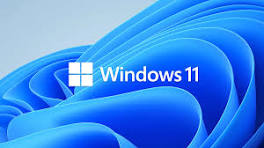
Windows 11’s New Black Screen of Death is Rolling Out for Users
Unveiling Windows 11’s New Black Screen of Death: A Critical UI Shift
In the complex landscape of operating systems, stability and user experience are paramount. Few incidents are as jarring to Windows users as the infamous “Blue Screen of Death” (BSoD), a stark indicator of critical system errors. However, a significant shift is underway in Windows 11 that redefines how users encounter system failures. Microsoft has begun rolling out a redesigned error screen interface, dubbed by the community as the “new Black Screen of Death” (BSoD), fundamentally altering how Windows 11 handles unexpected system restarts and recovery scenarios. This update, part of Windows 11 Build 26100.4762, marks a pivotal change in error handling and user interaction during system crises.
The Evolution of Error Screens: From Blue to Black
For decades, the Blue Screen of Death has been synonymous with catastrophic Windows errors. It served as an immediate, albeit jarring, notification of a system crash, often providing cryptic error codes that IT professionals would then use for diagnosis. With Windows 11 Build 26100.4762, released to the Release Preview Channel on July 10, 2025, Microsoft is moving away from this long-standing tradition. The new interface transitions from a blue background to a sleek black, accompanied by a redesigned layout for conveying critical system information. This change is more than just aesthetic; it represents a conceptual shift in how Microsoft aims to present and manage system failures.
This update is not an arbitrary change. It reflects a broader effort by Microsoft to modernize the Windows 11 user interface and streamline the diagnostic process for both end-users and IT administrators. While the core function remains the same – to inform the user of a critical system error and provide options for recovery – the presentation is intended to be less alarming and more informative.
Understanding Build 26100.4762 and Its Impact
Windows 11 Build 26100.4762 introduces the “new Black Screen of Death” as the standard interface for handling unexpected system restarts and critical recovery scenarios. Previously, similar visual changes were observed in specific insider builds, but this marks its broader rollout to the Release Preview Channel, indicating its imminent arrival for general users. This build fundamentally changes the graphical presentation of system crashes, affecting everything from driver-related errors to software conflicts that necessitate a system reboot.
The impact extends beyond mere aesthetics. IT professionals and system administrators will need to familiarize themselves with this new interface, as the location and presentation of diagnostic information, such as stop codes, may have been reconfigured. While the underlying
Windows kernel crash dump mechanisms remain consistent, the immediate visual feedback to the user and the initial troubleshooting steps might differ.
Security Implications and User Experience
While the “Black Screen of Death” primarily relates to system stability rather than a direct security vulnerability, its nature as an unexpected system halt can have indirect security implications. An unhandled system crash can lead to data corruption, lost unsaved work, and potential exposure of sensitive information if the system is not properly secured during recovery. For instance, an unexpected shutdown during a critical security update could
If not handled gracefully, frequent occurrences of these redesigned crash screens could degrade user trust and productivity. While Microsoft aims for a more polished experience, the underlying stability of the system remains paramount. Users are encouraged to ensure their systems are kept up-to-date with the latest patches due to the intricate dependencies of modern operating systems, even though the visual change to the BSoD does not introduce a new vulnerability in itself. Issues that trigger these screens often relate to driver incompatibilities, hardware failures, or critical software bugs, some of which could be exploited in complex attack chains. Though there is no specific CVE associated with the visual change itself, many vulnerabilities that lead to kernel panics or system instability could theoretically lead to a BSoD occurrence, for example, CVE-2023-28249 (a privilege escalation vulnerability that could lead to system instability).
Remediation Actions for System Stability
- Keep Drivers Updated: Outdated or corrupt drivers are a common cause of system crashes. Regularly check for and install the latest drivers for all hardware components, especially graphics cards, chipsets, and network adapters.
- Perform System Scans: Utilize Windows Defender or a reputable third-party antivirus solution to regularly scan for malware or rootkits that could cause system instability.
- Check System Logs: When a Black Screen of Death occurs, examine the Event Viewer (
eventvwr.msc) for critical errors in the “System” and “Application” logs. These logs often provide specific error codes or details that can help pinpoint the cause. - Run System File Checker (SFC): Open Command Prompt as an administrator and run
sfc /scannowto check for and repair corrupt Windows system files. - Disable Fast Startup: While designed to speed up boot times, Fast Startup can sometimes interfere with proper driver loading. This option can be found in Power Options within the Control Panel.
- Monitor Hardware Health: Overheating components or failing hardware (RAM, hard drive) can cause crashes. Use tools to monitor CPU and GPU temperatures.
- Review Recent Software Installations: If the crashes began after installing a new application, consider uninstalling it to see if the issue resolves.
Conclusion: Adapting to the New Reality of Windows 11 Errors
The rollout of Windows 11 Build 26100.4762 and its “new Black Screen of Death” represents a significant aesthetic and user interface change in how Microsoft communicates critical system errors. While the underlying causes of these system failures remain consistent—often related to hardware, drivers, or severe software bugs—the presentation is evolving. For IT professionals, adapting to this new visual language for system crashes is essential for efficient troubleshooting and user support. Users, too, should understand that a black screen with error information is now the standard indicator of a critical system event. Maintaining system stability through regular updates, driver management, and diligent diagnostics remains key in navigating this evolving landscape of Windows 11 error handling.





